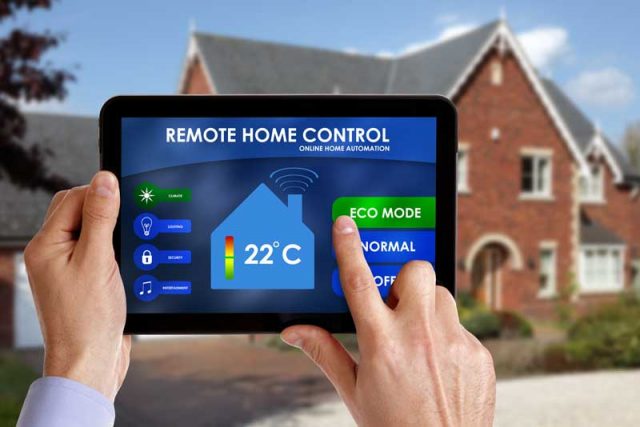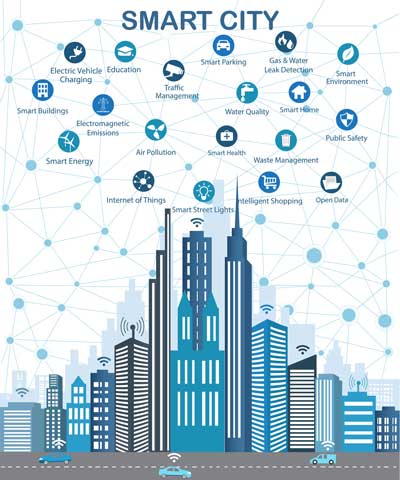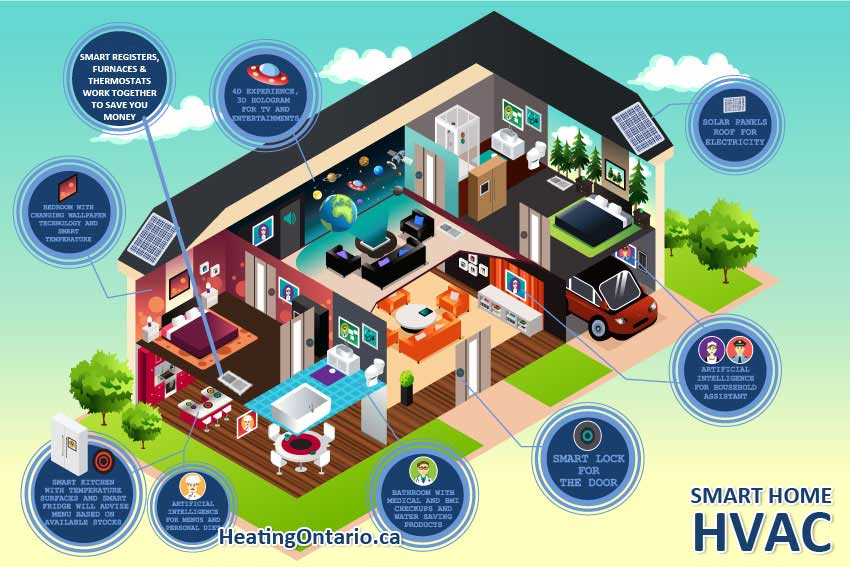With the progression of 5G networks and the Internet of Things (connected appliances, clothing and other gadgetry), many households will be looking to optimize the usefulness of these devices, while lowering their monthly expenses such as with Smart Home HVAC. One way this is happening is through creating a smart home/smart building environment. A smart device is one that interacts with your other devices for either practical or entertainment purposes, and can be controlled from anywhere there is internet access by the user.
Typically, in order to have a smart home/office, there is a brain, main server, hub or voice-controlled system that can respond to, monitor, report back and take action on the connected devices. There are professional automation controllers (such as you see in multi-million-dollar homes and offices), and also DIY type systems. To have a functioning system requires a reliable internet connection & accessible wifi at each corner & floor of your home or office.
DIY Smart Home/Office Automation Systems:
 Google Home (cloud-based)
Google Home (cloud-based)- Amazon Alexa (cloud-based)
- Apple Home Kit (cloud-based)
- Microsoft Cortana (cloud-based)
- Simple App controlled devices (such as on your phone, tablet or watch)
- DIY systems like Raspberry Pi (internally based)
These can set up routines or themes for certain times of the day or week to control the environment to match your family’s/employees needs. This way you can set a theme to have all lights turn off at night along with doors locked and the temperature lowered, you can set a mood for movie night, or you can even set up a scenario for dim lights to come on when going to the bathroom in the middle of the night. Your smart building can automatically sense when you’re not there so it can monitor security and lower the temperature of your office or smart home HVAC in winter (and vice-versa in summer), this way you can set a routine to use the least amount of energy automatically when it senses you don’t need it, saving you money.
Smart Home Setup Requirements
- Modem/router with minimum 2.4 GHz wifi (5G is better)
- A brain controller (Google Nest, Amazon Alexa, Apple Home, Microsoft Cortana, etc) (not a requirement but adds much more functionality)
- A Smart hub for controlling devices (Samsung, Sengled, Philips Hue, Nest, Wink, etc.- not a requirement but adds much more functionality)
- Smart devices (see list below) – (Zwave, Zigbee, X10, Insteon, Nest, etc. devices)
- Controllers: Voice-activated, FOBs, smart-phone, smart-watch, touch-switches & sensors
Perhaps the greatest elegance of having a Smart building system is that you can start small and add to it over time. You can begin with a single light bulb and grow the system from there. Smart homes should make things simpler and easier to use. If you start off with a few smart devices and you find its more hassle than its worth, then you didn’t have a huge investment wasted. In the least, if you aren’t interested in smart lights & music, a smart thermostat can be a set and forget device while saving you on your energy bills.
Smart Home/Building Devices
| lights and dimmers | thermostats | appliances |
| electrical outlets | humidifiers | vacuum & robots |
| smart TVs | air filtration systems | grass cutting robots |
| stereos & home theatres | motion sensors | security robots |
| blinds/drapes | smoke & c/o detectors | door & window sensors |
| leak detectors | smart meters | notification alarms |
| security/tracking cameras | baby monitors | sprinklers |
| security locks | door bell cameras/intercoms | personal devices (such as Fitbit) |
Any or many of these devices can be connected to your hub, controlled by one of the virtual assistants and off you go. Because everything can be done wirelessly, setup can be fast & easy.
Smart Home HVAC Technology You May Not Have Been Aware Of
There are also smart heating & cooling solutions for homes and offices. HEPA filters, water filtration systems, smart vents, humidity sensors, thermostats, in-furnace systems, smart baseboard heaters, even heated floors and driveways can all work together for the maximum of efficiency and cost savings. Smart vents have their own room sensors that act as individual thermostats and can be over-ridden if a room has low use.
There are many smart thermostat options as well, such as Nest, Leviton, Ecobee & Zen. Smart-controlled furnaces monitor supply & return air, humidity, CO2, fan speed, and filter and air quality. Many brands have or can be adapted to function in a smart home environment: Carrier, Lennox, York, Trane and many other. Home automation is becoming such an emerging field that even Elon Musk is getting into the game with his Tesla Smart Home HVAC.
Someday Soon All Homes Will Be Required To Have Smart HVAC Systems

As 5G rolls out, and millions of new related devices come online such as: IOT, surveillance cameras, self-driving cars, and smart appliances, there will be an increasing demand on our nations’ power grids. Many of these systems are many decades old, and in order to compensate for the strain, there will be incentives for families and business owners to use less power. Smart building & smart cities will be the answer moving forward.
Imagine a home that automatically opens the door for you when you walk up carrying bags of groceries, turns the lights on, and the smart home hvac starts acclimatizing the house for you, playing your favourite playlist – pretty cool right! Now if it could only cook your dinner, you’d be all set.
To learn more about traditional or smart home hvac options, please give us a call for a free quote at: 647-591-2683 or reach out using our contact us page.

